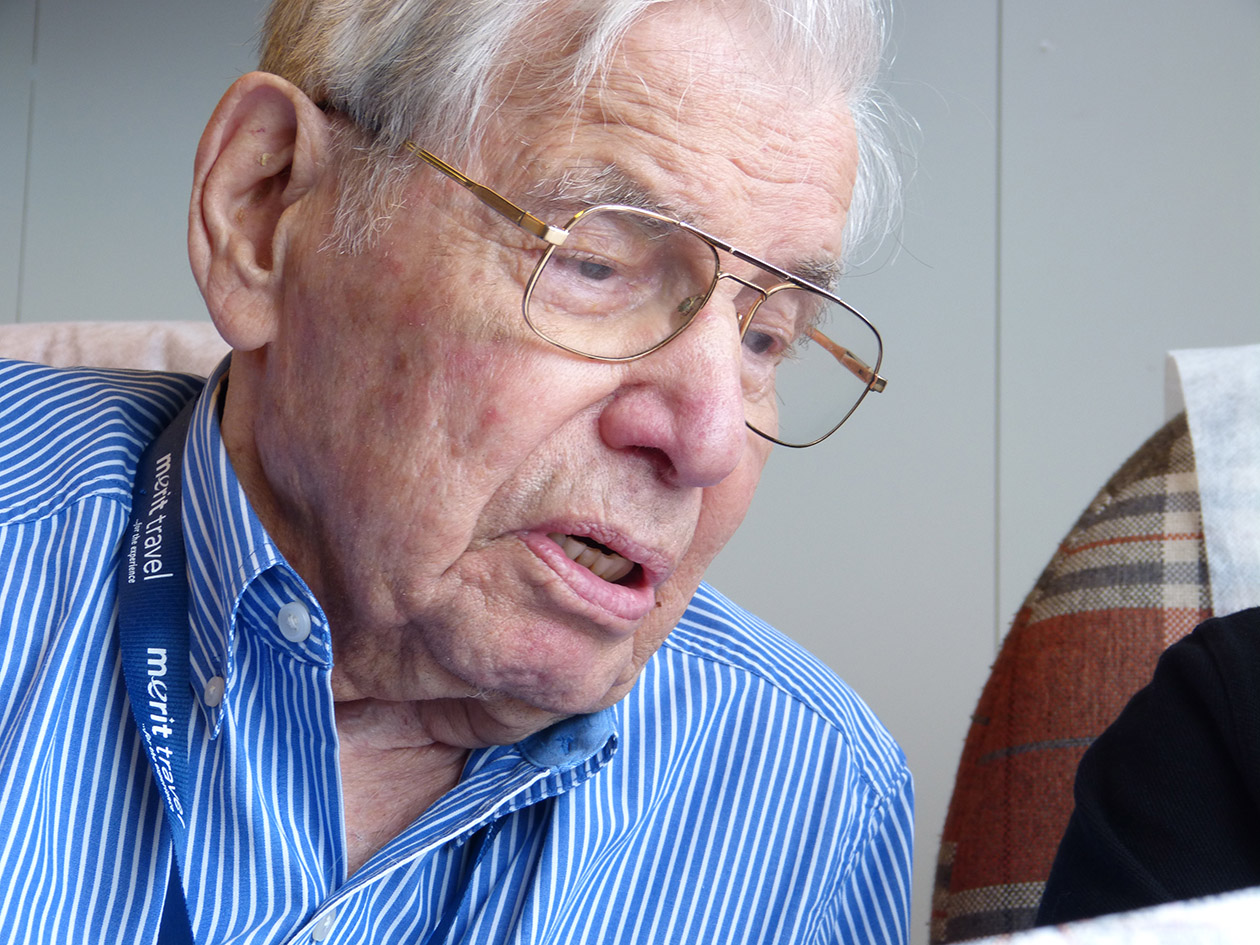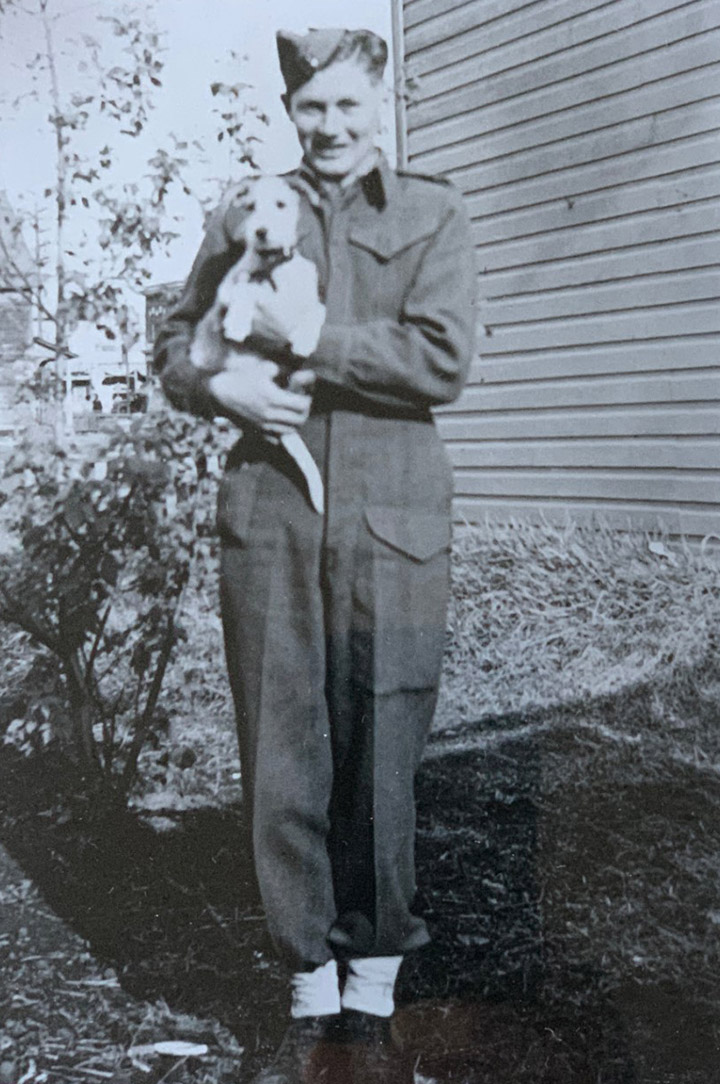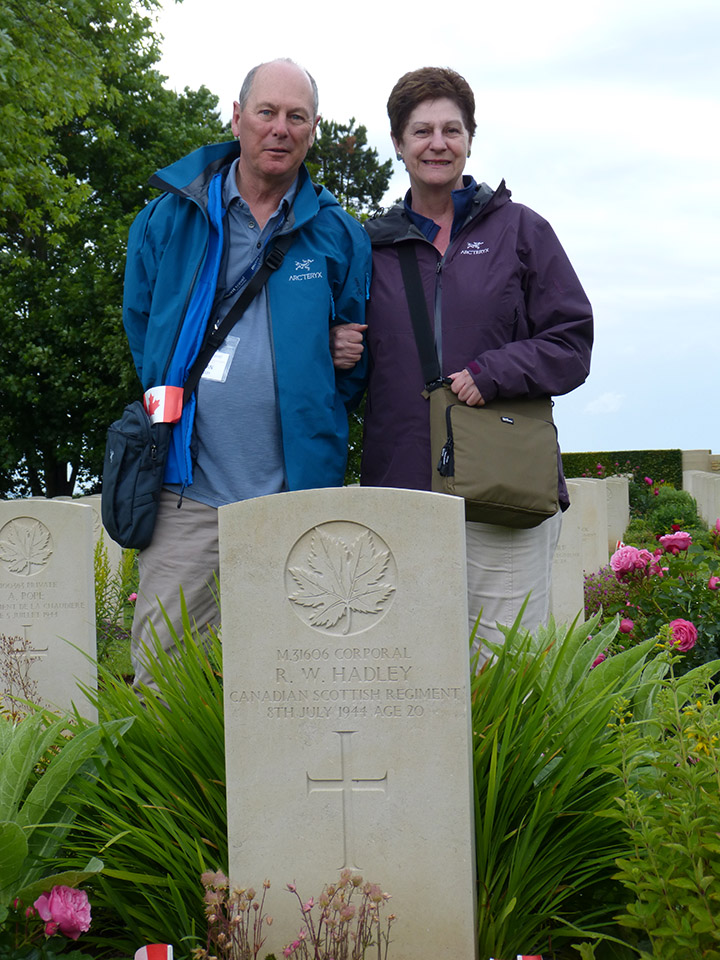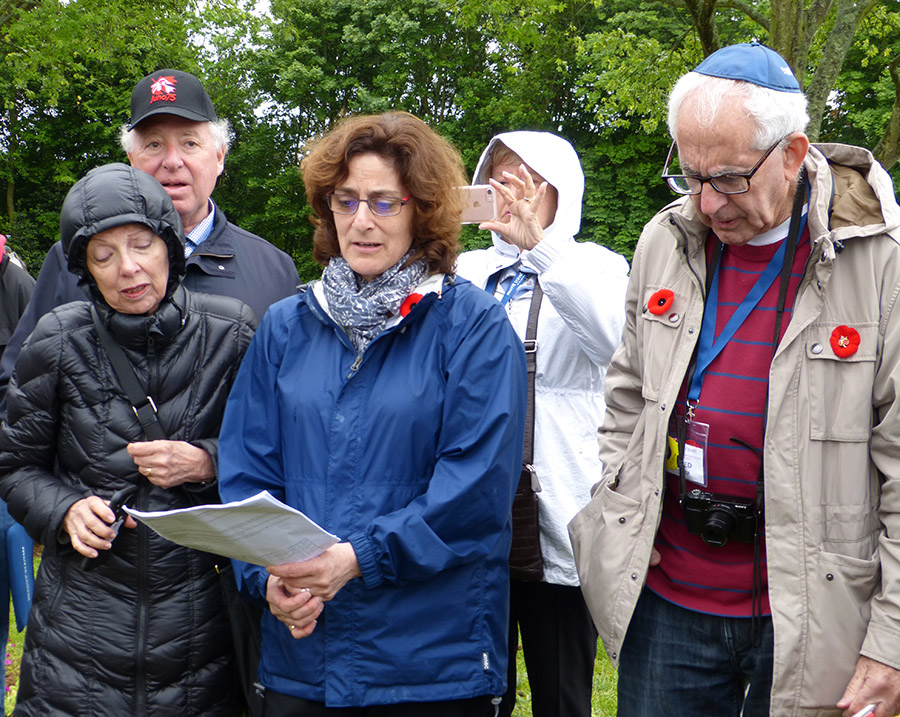
He sat down to rest. He sighed a long, audible sigh. And he smiled with a touch of satisfaction. Around Bill Novick, sat family and some of his fellow travellers gathered, this spring day, at a museum in Normandy, France. They all sensed that Bill had a story to tell: the time, just before D-Day, when his Halifax bomber was coned.
“Enemy gunners at Cologne (Germany) put up a box barrage (concentrated anti-aircraft fire) 3,000 feet high, two miles wide by 10 miles long,” he said. “Searchlights moved all over the sky … and we were coned by the lights. That required evasive action called a corkscrew.” That meant Pilot Officer Novick put the 18-tonne bomber into a violent dive one way, then another, at speeds up to 250 miles per hour to escape the lights and the anti-aircraft fire.
“It was four minutes of sheer terror,” he concluded. “If we were scared, it never entered my mind that I wasn’t going to make it.”
At 95, Bill Novick is still a working ear, nose and throat specialist in Montreal. This past week he joined a tour I led through the battlefields of Normandy during 75th anniversary observances of D-Day. On the night of June 5/6, 1944, P/O Bill Novick’s crew bombed a vital target – the Caen Canal bridge – to prevent German tanks from counterattacking against the D-Day troops landing on Juno Beach.

Among the others in the group exploring Second World War battlefields, museums, and the famous Juno invasion beaches, Liz and Brian Hadley came from Woodstock, Ont. At a tombstone in Beny-sur-Mer Canadian military cemetery (where more than 2,000 Canadians killed in the Battle of Normandy lie buried), the Hadleys placed flags and read the epitaph “At Rest” on the headstone of Cpl. Ralph Hadley, Brian’s uncle, affectionately known as “Bud.”
In early July 1944, as the Canadian Essex Scottish regiment pushed inland toward the German-occupied city of Caen, Cpl. Hadley took a sniper’s bullet in the leg.

Some distance from medical treatment at a regimental aid post, Cpl. Hadley, age 20, refused to be evacuated before his more seriously wounded comrades received first aid. But before he could be transfused, Bud bled to death, Brian said. “If this kind of wound had happened today, he’d probably have survived.”
Brian Hadley laments the grief of Cpl. Hadley’s father, Brian’s grandfather, Malcolm Hadley, who was flying operations against the Germans elsewhere in Europe in the war, when he learned that his son had died in action. Brian and Liz felt drawn to Uncle Bud’s grave out of respect and a sense of loss.
“If he’d consented to medical assistance,” Brian said, “maybe I’d have had this uncle I never knew.”

In another plot at Beny-sur-Mer, journalist and author Ellin Bessner (also on our tour) paid her respects, not to a relative, not even an acquaintance, but to a member of the Royal Canadian Artillery she considers a hero. In 1942, while training in Britain for the invasion, 22-year-old George Meltz met hospital volunteer Trudy Lewis. They fell in love, got married at a synagogue in London, and seven months later, on July 8, 1944, Meltz died in the Battle of Normandy. From the moment she discovered his tombstone, several years ago, Ellin was captivated by the epitaph composed by Meltz’s widow.
“He died so Jewry shall suffer no more,” it read.
Ellin felt she had to search out Meltz’s story. She learned that the president of her synagogue was artilleryman Meltz’s nephew, that he’d indeed been named after his uncle and that the nephew lived just blocks from her in Richmond Hill, Ont. Her discovery led to a search for the stories of other Jews served in the Canadian armed forces between 1939 and 1945, and her book Double Threat: Canadian Jews, the Military, and World War II.
“Your name is now known,” Ellin said during a Kaddish (a prayer of mourning) at George’s gravesite this week. “In the Jewish tradition, if you talk about someone then they’re never forgotten.”
In the same vein, former Halifax bomber pilot Bill Novick paid tribute to his aircrew mates for their skill and bravery in attacking the Caen Canal bridge on D-Day 75 years ago this week. Bill explained that he remembered a magazine interview with a surviving German tank commander who’d tried to mount a counterattack against the Allied beachheads in Normandy in 1944.

But the panzer officer explained that he was thwarted because that bridge over the Caen Canal had been destroyed by Allied bombers.
“We’d completed our D-Day operation,” Novick said. “Consequently that German tank commander couldn’t attack our troops.”
The Canadians travelling with Bill applauded. He just nodded quietly.
If Pilot Officer Novick hadn’t completed that mission, if Cpl. Hadley hadn’t served so selflessly, and if artilleryman Meltz hadn’t decided to defend his faith to the death, D-Day and rest of the liberation of Normandy, France, might have been a very different story.